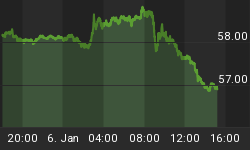The late Charles J. Givens, author of several New York Times bestsellers including the monster hit WEALTH WITHOUT RISK, attempted, in his lifetime, to simplify the "mainstreet" approach to investing.
 Offering a phone support organization which peaked in the early 1990s (and which allegedly had some 300,000+ deliriously-happy dues-paying members in the US and Canada at the time) Givens essentially offered "an auto club ... but about money" to his subscribers. Not only did you receive regular market updates, but membership actually gave you the right to actually pick the phone whenever you liked, and talk to a real live person about your investments.
Offering a phone support organization which peaked in the early 1990s (and which allegedly had some 300,000+ deliriously-happy dues-paying members in the US and Canada at the time) Givens essentially offered "an auto club ... but about money" to his subscribers. Not only did you receive regular market updates, but membership actually gave you the right to actually pick the phone whenever you liked, and talk to a real live person about your investments.
Givens' approach, at the time, was severely criticized by his peers yet, nonetheless, made many of his followers very wealthy indeed. It was a true marvel of investment simplicity:
1. Watch interest rates.
2. Do not "allocate!" At any single point in time you are to be 100% invested in one of: stock funds; OR bond funds; OR MM funds.
3. When rates are dropping from extreme highs, you are in bond funds.
4. As rates continue to drop, move entirely to stock funds. Pick only from the best of the recent performers and diversify thereof. Ignore scrupulously all the boilerplate "past performance does not..." warnings. They are for lesser men, and will only serve to confuse and befuddle you.
5. When rates ultimately turn around and start to head back, go 100% to MM funds.
6. Start all over again. Enjoy the money you have just made. Don't forget to keep paying your dues. Noblesse Oblige.
Givens' critics said the formula was simplistic to the point of silliness, and constant full-sector investment (ignoring even the most basic tenets of Asset Allocation) was like playing with a loaded gun. His fans however said it worked -- and, please note, it was with hindsight perhaps the ideal way to play the unique market conditions of the nineties.
At one point Givens, a man not known for spending money foolishly -- especially his own -- paid a pro to do a "post" analysis of the system going back literally decades. The study showed it would have worked in the 60s and 70s. Interesting?
However, by the time the study was released, Givens had already made the mission-critical error of picking a fight with a major US financial writer. One who lobbed verbal grenades at him from a national publication while he had to pay the New York Times for space to counter-attack. The rest, as they say, is history. The organization faltered. Within a few years its leader was no longer with us.
So why are we reviewing history?
More importantly, why are we dredging up one of the most simplistic approaches to investment ever offered, during what is arguably one of the most complex markets ever?
Because we think the core premise is valid.
Watch rates.
And then watch them again.

We are telling our own readers that any positive market action over the next two years (and indeed we do indeed expect some positive action) will become self-defeating when rates ultimately back up.
We don't know when rates will back up.
The goods news?
We don't have to know!
All we need to do is emulate the best sea captains in history. We will sail the oceans of economic turbulence with one eye fixed firmly on the rate horizon.
When rates start to act strangely, we man the lifeboats.
It's as simple as that.
* * * * * * * * * * * * * * * * * * * * * *
As 2008 comes to a close, we would like once again to thank our associates in the Lombardi Group for offering us yet another year in which to steer their 100% electronic publication "Profit Taker" through challenging waters. As we do every year, below are our top picks for the last year. All the best for 2009!

















